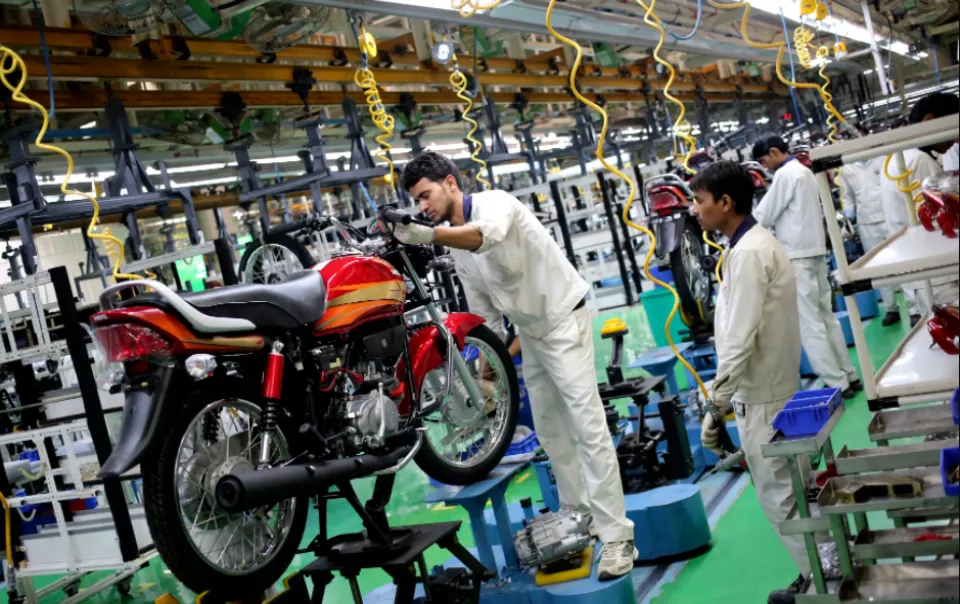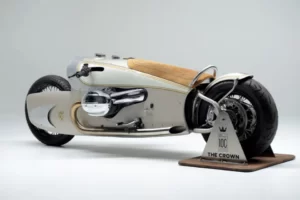There are several factors that have contributed to India’s rise to prominence in the motorcycle industry.
With about 40% of the global motorcycle market’s volume, India is the largest motorcycle market in the world. Over the years, the Indian motorcycle industry has undergone remarkable growth and change, helping the nation establish itself as a major player in the world of motorcycles. India has become a major player in the motorcycle industry thanks to the explosion in the number of motorcycles sold there, iconic brands like Royal Enfield and, more recently, Hero MotoCorp’s increased global exposure, and the establishment of manufacturing facilities by multinational corporations. The history of India’s rise to prominence in the motorcycle industry is examined in this article.
The Motorcycle Boom in India
India’s passion for motorcycles began in the early 1950s, when the government encouraged the establishment of domestic manufacturing soon after the nation attained independence. Due to the increasing demand from a rapidly growing population, several Indian motorcycle manufacturers emerged as a result. For millions of people in a nation with weak infrastructure, motorcycles provided an affordable and practical form of transportation. In a competitive market, they were a more advantageous substitute for the more expensive four-wheelers. Bike riding became a representation of freedom and mobility as a result, and the motorcycle market in India experienced an explosion.
The Rise of Royal Enfield
In 1955, when the government needed two-wheelers that could handle rough terrain and be used by the Indian Army and police in the nation’s western regions, motorcycles first appeared in India. The first batch of motorbikes produced in India was the 350 cc “Bullet” by the Royal Enfield is a British company. This motorcycle’s initial assembly took place in Chennai. Components imported from England were used to assemble the first motorcycles. By the end of 1962, all of Royal Enfield’s motorcycles were produced in India after the company bought the tools needed to do so in 1957.
Today, Royal Enfield is possibly one of the top brands that contributed significantly to the internationalization of the motorcycle industry in India. The iconic designs and rich history of Royal Enfield motorcycles have captivated riders all over the world. Their bikes became well-known and popular around the world for their toughness and vintage appeal. This publicity improved the brand’s standing while also drawing attention to India’s motorcycle production capabilities. Enfield has advanced considerably from the earlier Classic 350 to the currently well-liked Interceptor 650 twin. For those who yearn for the vintage, retro charm in their hearts, their upcoming motorcycle catalogue only makes things more exciting.
India Becomes a Production Hub
The Indian motorcycle industry had undergone significant change by the 1990s. Three established Japanese conglomerates—Honda, Kawasaki, and Suzuki—had partnered with three renowned Indian business giants—Hero, Bajaj, and TVS, and each had acquired technology from the other. This helped India’s motorcycle sales increase from 759,000 units in 1983 to 4.1 million units in 2001.
Multinational corporations became interested in India as a result of the success of its motorcycle producers and its thriving domestic market. They understood the great benefits and potential of setting up factories in India. These businesses, which included well-known brands like KTM, Yamaha, Honda, and Triumph, recognized the benefits of making use of India’s skilled labor, cost-effectiveness, and sizable market potential. For instance, to establish manufacturing facilities in India, KTM partnered with the world’s largest two-wheeler manufacturer, Bajaj Auto. Through this partnership, KTM was able to take advantage of Bajaj’s manufacturing and distribution know-how as well as the country’s affordable production capabilities. As a result of the partnership, KTM motorcycles are now produced in India, serving both the domestic market and serving as a global export hub for KTM motorcycles.
India’s Growing Influence in the Motorcycle Industry
Beyond just its manufacturing prowess, India has become a major player in the motorcycle sector. With manufacturers putting money into technology and creating bikes, the nation has emerged as a center for innovation, research, and development. For instance, the development of electric motorcycles has been spearheaded by several Indian companies. The recent startup Revolt Motors, which unveiled India’s first electric motorcycle with AI capabilities, is one notable example. This is a prime example of the nation’s dedication to a viable transition to electric mobility.
Indian motorcycle manufacturers are growing their global presence by exporting their bikes to various nations. Other notable players with a significant presence in foreign markets include Bajaj, Hero, and TVS in addition to Royal Enfield. Along with proving how well-made and competitive Indian motorcycles are, they have also served as a global showcase for the nation’s engineering prowess and manufacturing capacity.
Not only is India’s sizeable domestic market responsible for its rise as a major player in the motorcycle sector, but also the industry’s capacity to adopt new technologies, keep up with changing fashion trends, and create motorcycles that meet a variety of consumer needs. India’s presence in the motorcycle industry is expected to increase over the next few years thanks to a variety of domestic brands, international partnerships, and multinational production facilities.
Reference: www.topspeed.com



